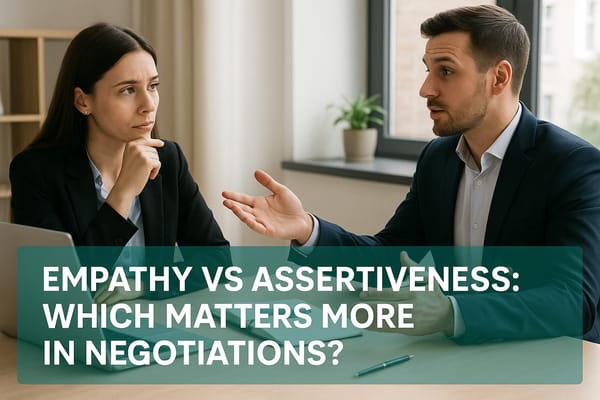5 Steps to Present a Portfolio for Job Interviews
Learn how to effectively present your portfolio in job interviews with these five essential steps to impress potential employers.

Your portfolio can make or break your job interview. Here’s how to nail it:
- Build Your Portfolio: Choose 3-5 relevant projects, highlight measurable results, and tailor it to the job.
- Tell Your Story: Use storytelling to explain your process, challenges, and outcomes with data-backed results.
- Practice Your Delivery: Rehearse, manage your timing, and prepare for questions using the STAR method.
- Match Company Needs: Research the company and showcase work that aligns with their goals and challenges.
- Present Like a Pro: Start strong, use confident body language, and connect with your audience.
Quick Tip: Hiring managers often spend only 7.4 seconds on initial application materials. Grab their attention with a clear, tailored, and engaging portfolio presentation.
Related video from YouTube
Step 1: Build Your Portfolio
Your portfolio should be a well-thought-out showcase of your skills and accomplishments, tailored to impress potential employers. Research shows that interviewers dedicate about 60% of their evaluation time to portfolio content that directly matches the job's requirements [1].
Pick the Right Projects
Choose 3-5 standout projects that highlight your expertise and are relevant to the role you're aiming for. These projects should showcase your abilities, solve real problems, and align with the job description.
Focus on:
- Relevance: Include work that matches the role's key responsibilities.
- Impact: Highlight projects with measurable outcomes or innovative solutions.
- Variety: Demonstrate a range of skills while staying aligned with the job's focus.
Organize for Clarity
Structure your portfolio into clear, easy-to-navigate sections that guide the viewer through your career journey:
| Section | Purpose |
|---|---|
| Introduction | Share your personal brand statement and key highlights. |
| Project Showcase | Present problems, your solutions, and the results. |
| Technical Skills | List tools, techniques, and certifications you’ve mastered. |
| Professional Growth | Highlight career milestones and achievements. |
Tailor to the Job
Customizing your portfolio for each role can make a big difference. Study the job description and emphasize experiences that match the employer’s needs. For example, applying for a UX design position that prioritizes user research? Lead with projects that spotlight your research methods and user-focused design process.
"What sets exceptional portfolios apart is not just the quality of work, but how well candidates align their experience with our specific needs and demonstrate understanding of our industry challenges." [1]
To make your portfolio look polished and professional, consider using tools like Wix or Squarespace. These platforms offer templates designed for various industries, making it easy to create a sleek and user-friendly presentation.
Once your portfolio is ready and aligned with the role, you're set to craft a compelling story around your work.
Step 2: Tell Your Story
Your portfolio is organized and customized for the role - now it’s time to make it stand out through storytelling. During interviews, reviewers might spend 30-45 minutes discussing your portfolio, so a strong narrative can keep them engaged.
Build a Story with Context and Results
When sharing your project stories, focus on these key elements:
| Story Element | What to Include |
|---|---|
| Background | Client, team, and timeline |
| Problem Statement | Business challenge, user needs |
| Your Role | Responsibilities, collaboration |
| Constraints | Budget, timeline, and limitations |
| Process | Approach, methods, and iterations |
"Reviewers want to be able to envision themselves joining you on such a journey. Telling them a story is an effective way of helping them form that mental picture." [1]
Highlight your achievements with clear, measurable proof of your contributions:
Quantitative Results:
- User engagement metrics
- Gains in efficiency (time, cost, or performance)
- Revenue impact
Qualitative Outcomes:
- User feedback
- Client testimonials
- Recognition from your team
- Process improvements
For example: "The redesigned checkout process reduced cart abandonment by 35% within three months, generating $2.1M in additional revenue for Q4 2024."
"Articulate your creative process - and not just the choices you made, but why you made those choices." - Gabi Duncombe [3]
Once your story is refined and your results are clearly presented, the next step is ensuring your delivery matches the strength of your content.
Step 3: Practice Your Delivery
Once you’ve built your portfolio story, the next step is to focus on how you present it. A strong delivery can help your portfolio leave a lasting impression and connect with your interviewers.
Rehearse Your Presentation
Go through your portfolio walkthrough to fine-tune your timing and ensure it fits within the usual 30-45 minute interview slot. Break down how much time you’ll spend on each section, and practice in front of a mirror or record yourself. This helps you assess your tone, pacing, and body language.
"A great story takes the audience on a journey. It has a clear beginning, middle, and end." [3]
Prepare for Questions
Think through how you’ll answer common portfolio-related questions, focusing on your technical skills and problem-solving approach. Use the STAR method (Situation, Task, Action, Result) to structure your answers and tie them back to the role you’re applying for.
Here are some tips to help you respond effectively:
- Pause briefly to gather your thoughts before answering.
- Relate your responses to the job’s requirements.
- Maintain eye contact and use natural gestures to highlight key points.
When discussing challenges in your projects, be open about the difficulties you faced but focus on how you tackled them. For unexpected questions, practice with a mock interviewer to build confidence. Deep breathing can also help calm your nerves before you begin presenting.
Once your delivery is solid, you’ll be ready to adapt your portfolio presentation to match the specific needs of the company.
Step 4: Match Company Needs
Once you've practiced your presentation skills, the next step is to customize your portfolio to fit the company you're interviewing with. This shows that you understand their goals and are genuinely interested in contributing to their success.
Study the Company
Dig into the company's values, challenges, and recent projects. Check out their website, social media, and any recent news. Pay attention to their products, design style, updates, and industry hurdles. This will help you tailor your portfolio to reflect what matters most to them.
"Employers want to know how you handle problems and how you would fit in their design team." - Tiffany Eaton, Interaction Designer at Google.
Pick Relevant Examples
Choose portfolio pieces that showcase your ability to tackle challenges similar to those the company faces. Use your research to guide your selection and highlight the most fitting aspects of your work.
Here’s how to align your portfolio with the company’s focus:
| Company Focus | Portfolio Element to Highlight |
|---|---|
| User-focused collaboration | Projects that emphasize user research and teamwork |
| Technical problem-solving | Examples involving complex challenges and solutions |
| Quick iteration cycles | Cases where you rapidly prototyped and improved ideas |
When presenting these examples:
- Use data to show measurable results.
- Emphasize skills that align with the job description.
- Illustrate growth in your problem-solving methods.
- Show variety by including diverse projects that reveal flexibility.
Step 5: Present Like a Pro
Once your portfolio is tailored for the company, it’s time to focus on how you present it. The way you deliver your presentation can be just as impactful as the content itself.
Start Strong
Kick things off with confidence. Briefly introduce yourself, highlight the portfolio's main points, and explain how your work aligns with the role. For instance, share your name, your professional role, and a quick rundown of the projects you’ll be discussing. This sets the tone and creates a strong first impression.
Use Clear Body Language
Your body language speaks volumes. Stand upright with a natural posture, use purposeful gestures, and maintain consistent eye contact. Add enthusiasm with facial expressions and keep your footing steady throughout the presentation. These small adjustments can make a big difference in how confident and engaged you appear.
Connect with Interviewers
Make your presentation interactive. Turn it into a conversation by linking your work to the company's goals and inviting feedback. Federico Francioni puts it perfectly:
"Showcasing your work is important, but your craft is not the only thing you should be relying on. You have a unique story to tell, be bold and show a portfolio that you're really proud of."
For remote interviews, focus on the camera to simulate eye contact and use vocal variety to keep your audience interested. The goal is to engage them, not just present to them.
Conclusion
A well-crafted portfolio can make you stand out during job interviews. By tailoring your portfolio, sharing meaningful stories, and presenting them with confidence, you can leave a strong impression.
Make Use of Helpful Tools
Building a portfolio takes time, but the right resources can make it easier. Here's a simple breakdown to guide your preparation:
| Phase | Key Steps |
|---|---|
| Before the Interview | Organize sections clearly, pick relevant projects, match them to the job. |
| Practice | Rehearse your delivery, prepare responses, and fine-tune your storytelling. |
| Interview Day | Start with confidence, use engaging body language, and connect with the interviewers. |
Your portfolio isn't just about showing off past work - it's a chance to highlight your problem-solving skills, creative approach, and professional development.
Armed with these tips, you'll be ready to present your portfolio with confidence and leave a lasting mark.
FAQs
Here are answers to some common questions about portfolio presentations, expanding on the strategies mentioned earlier.
How do you present a portfolio in an interview?
When presenting your portfolio, start with a brief introduction, highlight 3-4 key projects, and wrap up by connecting your work to the role you’re interviewing for. Focus on telling a story that emphasizes your problem-solving skills and shows how your experience matches the job's needs. This ties back to the storytelling and customization tips discussed earlier.
How to ace portfolio presentations in product design interviews?
Storytelling and visuals play a big role in delivering a strong product design portfolio presentation.
"A portfolio presentation should feel like telling a story: introduce the character (you), set the scene (the organization, problem space, your team), and the conflict (the problems you worked on)." - Hiring Manager [2]
To make your presentation stand out:
- Use visuals like wireframes, prototypes, and user flows to bring your projects to life.
- Focus on the process - how you tackled problems - not just the end results.
- Share metrics and outcomes that underline your impact.
- Be ready to explain your design decisions and how you iterated on them.




